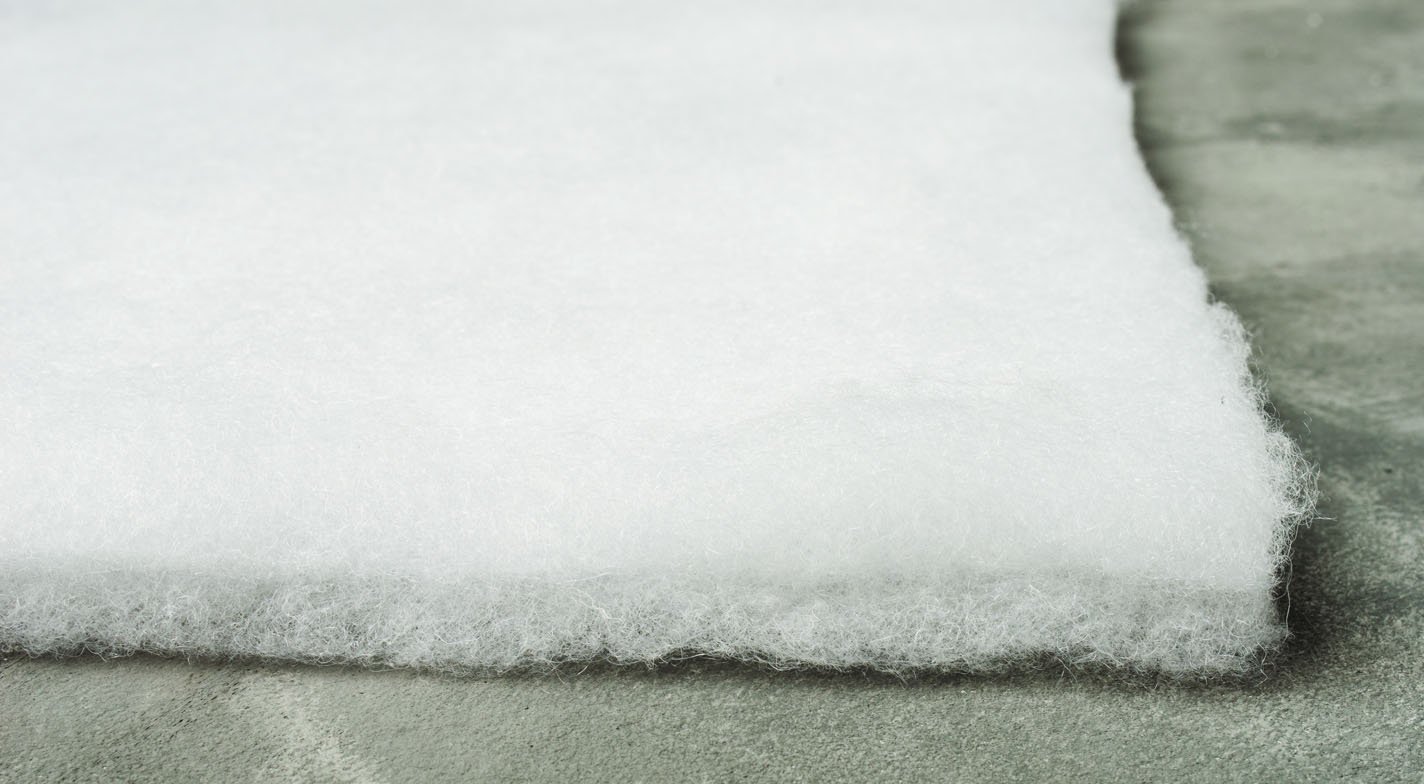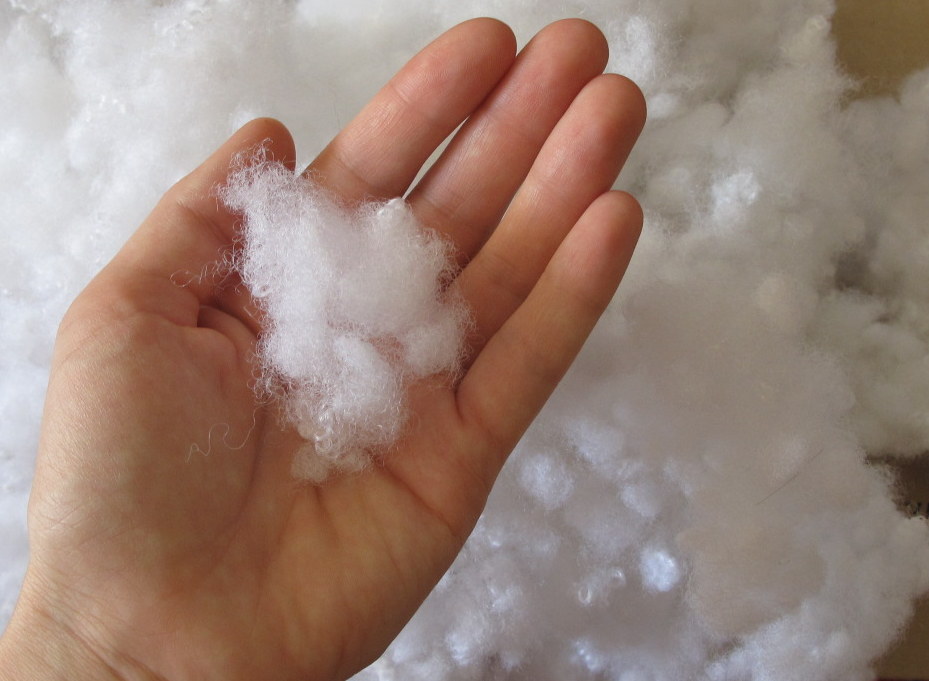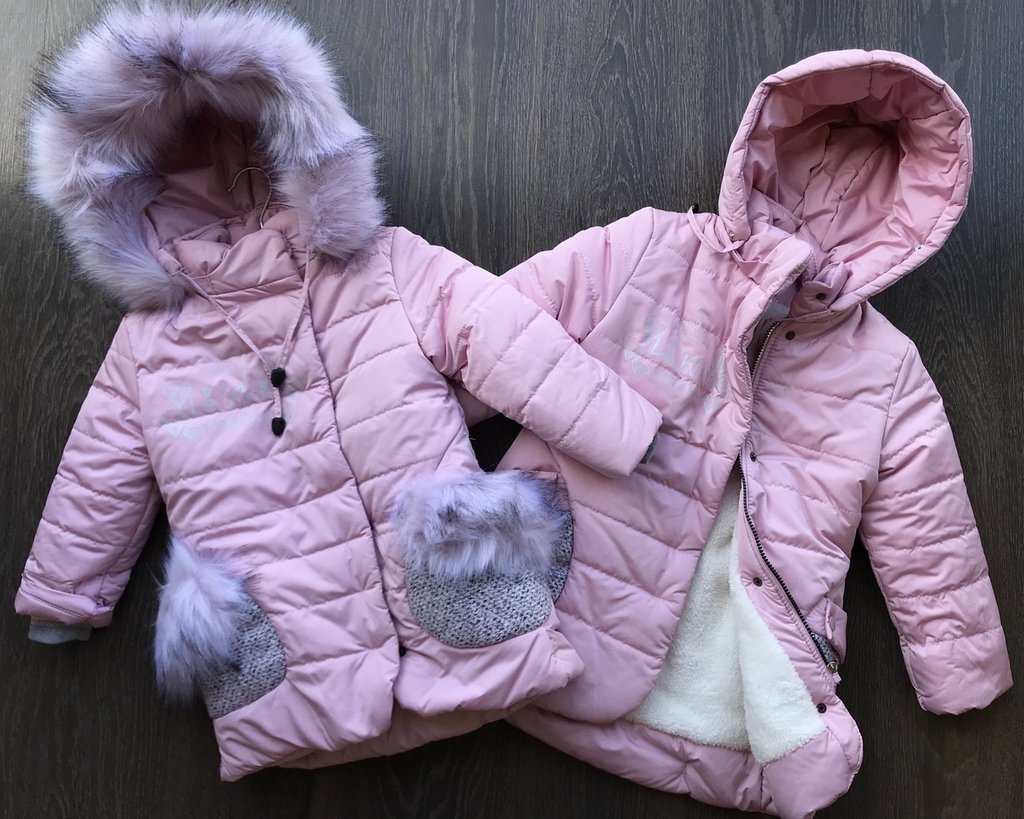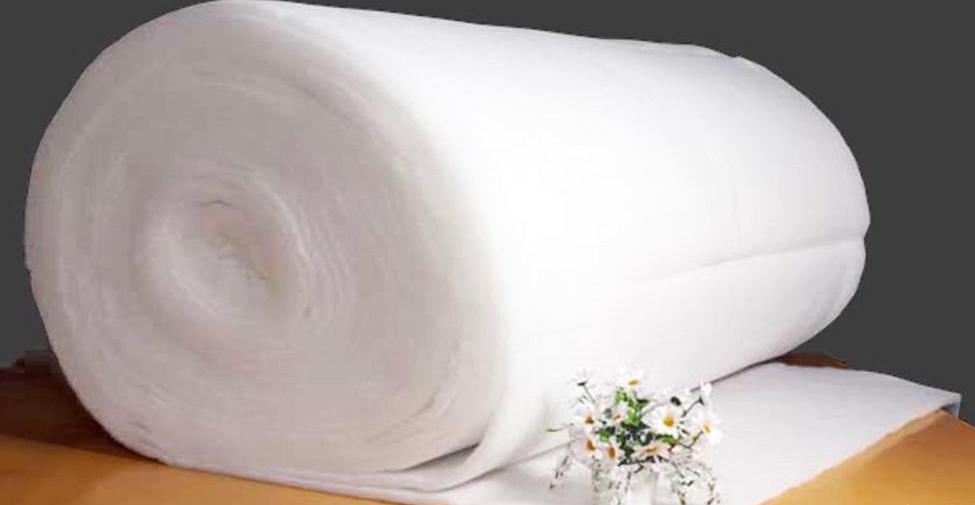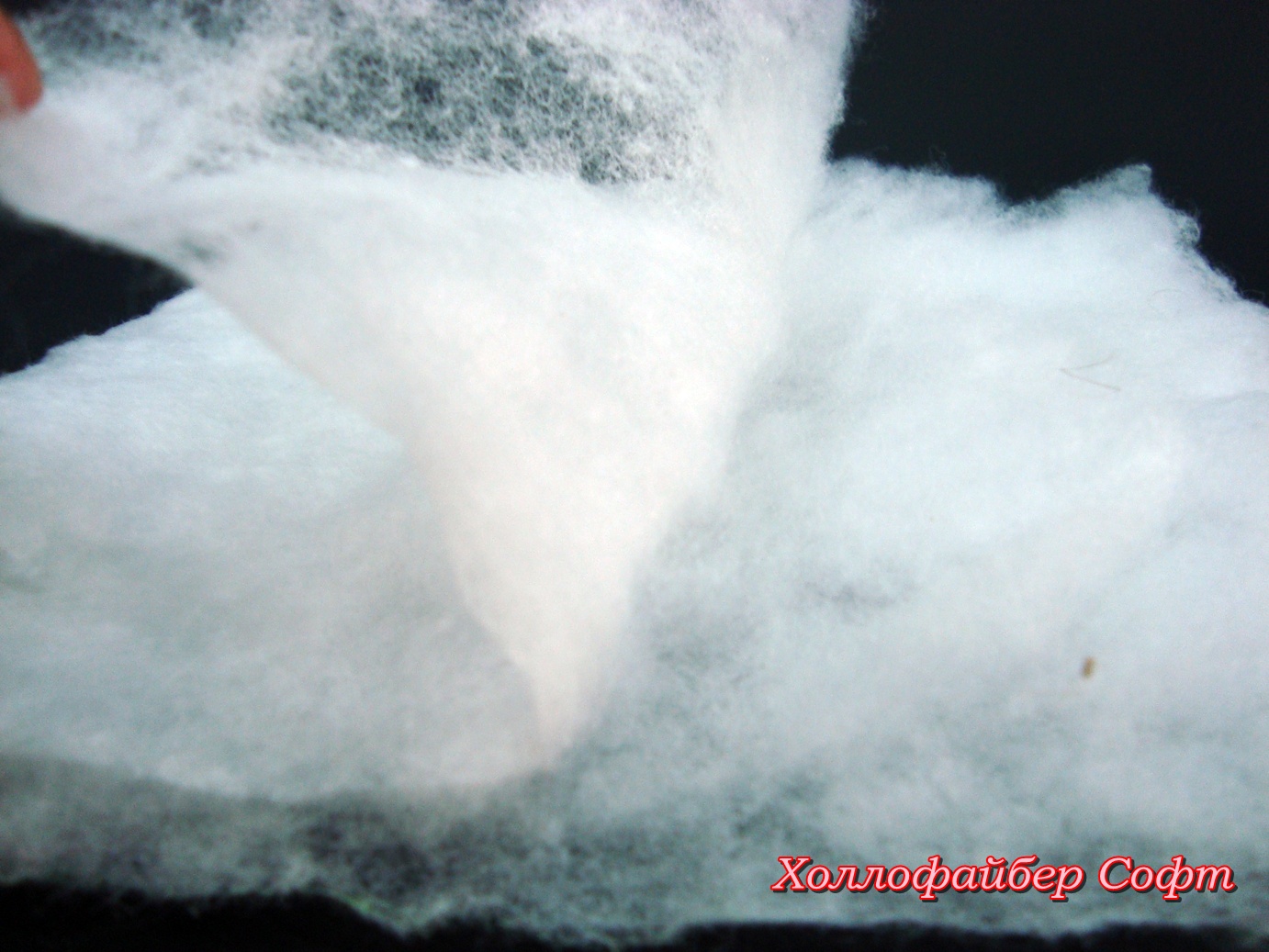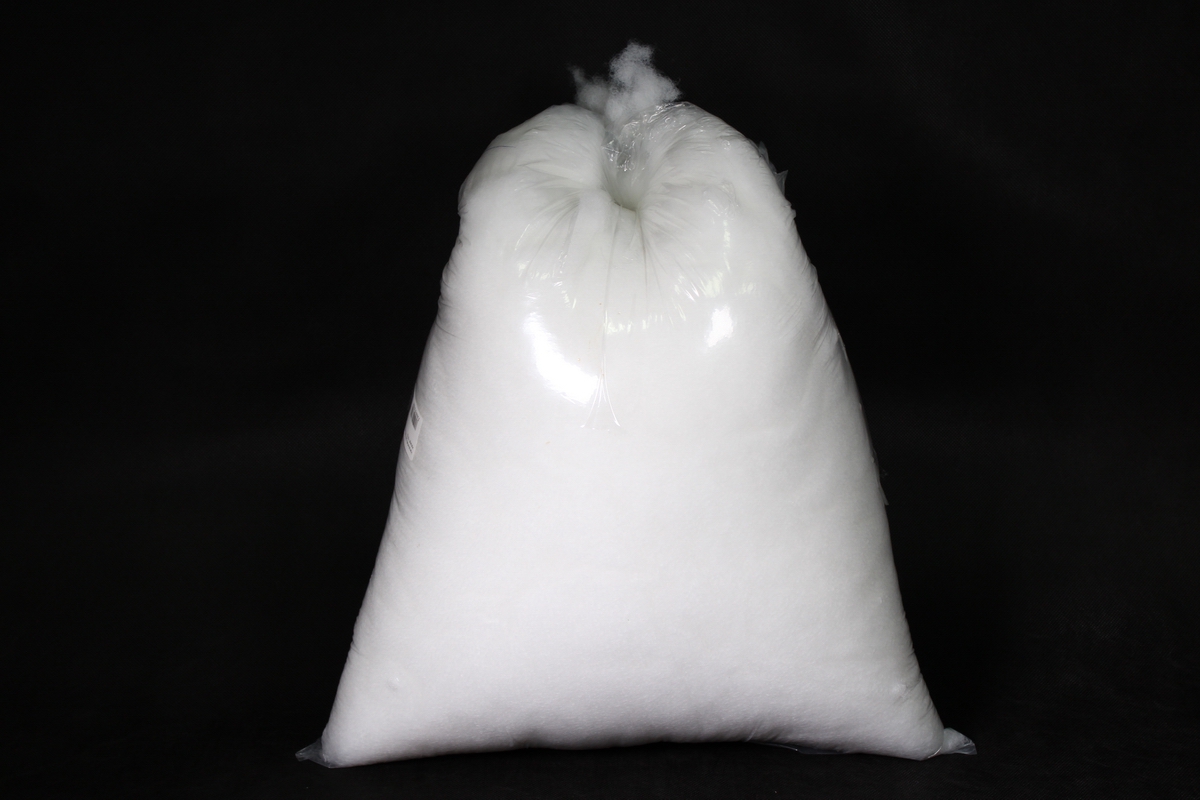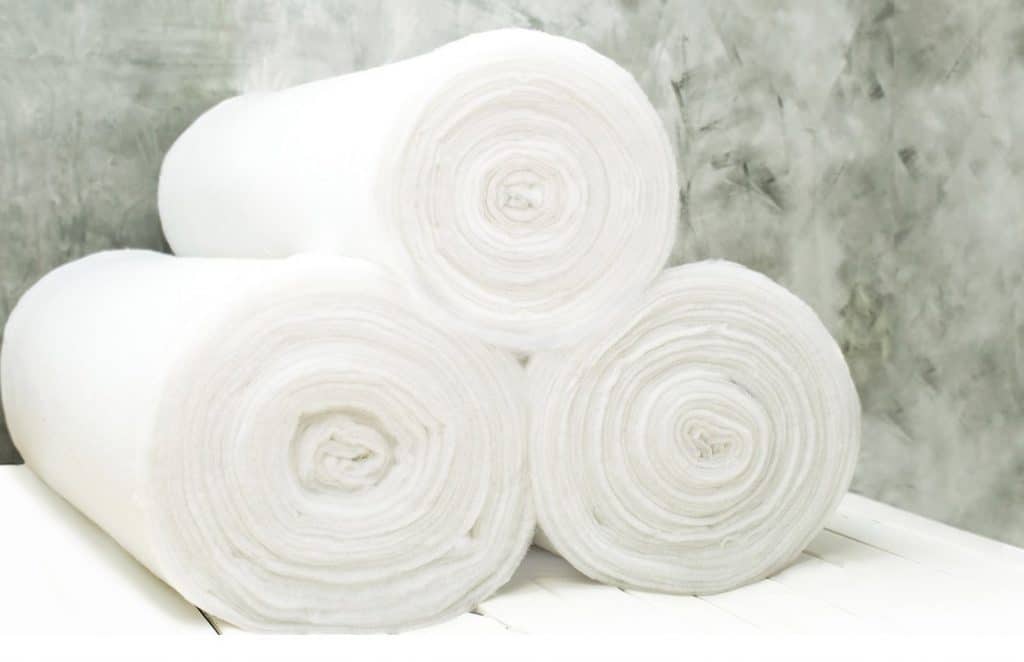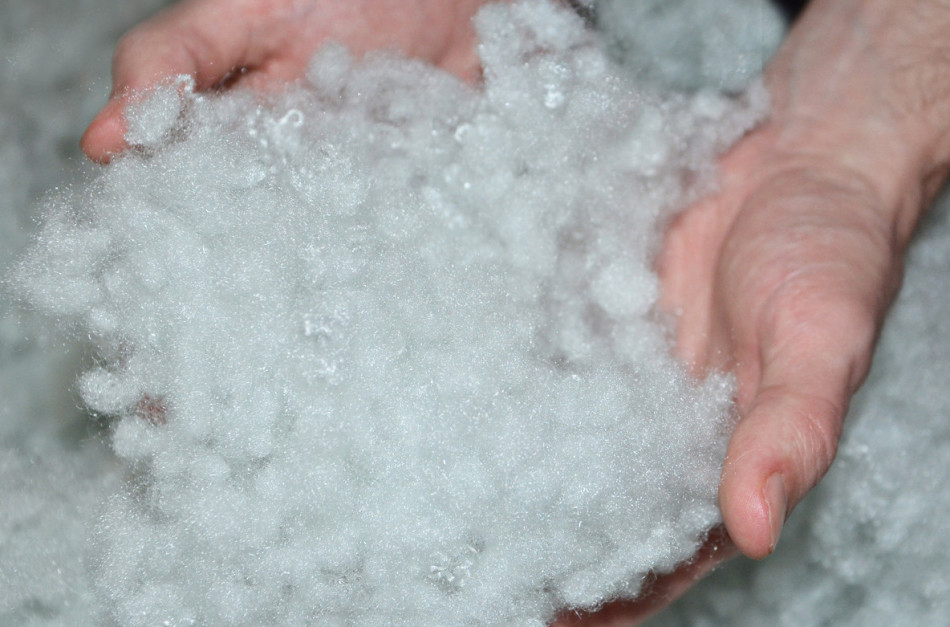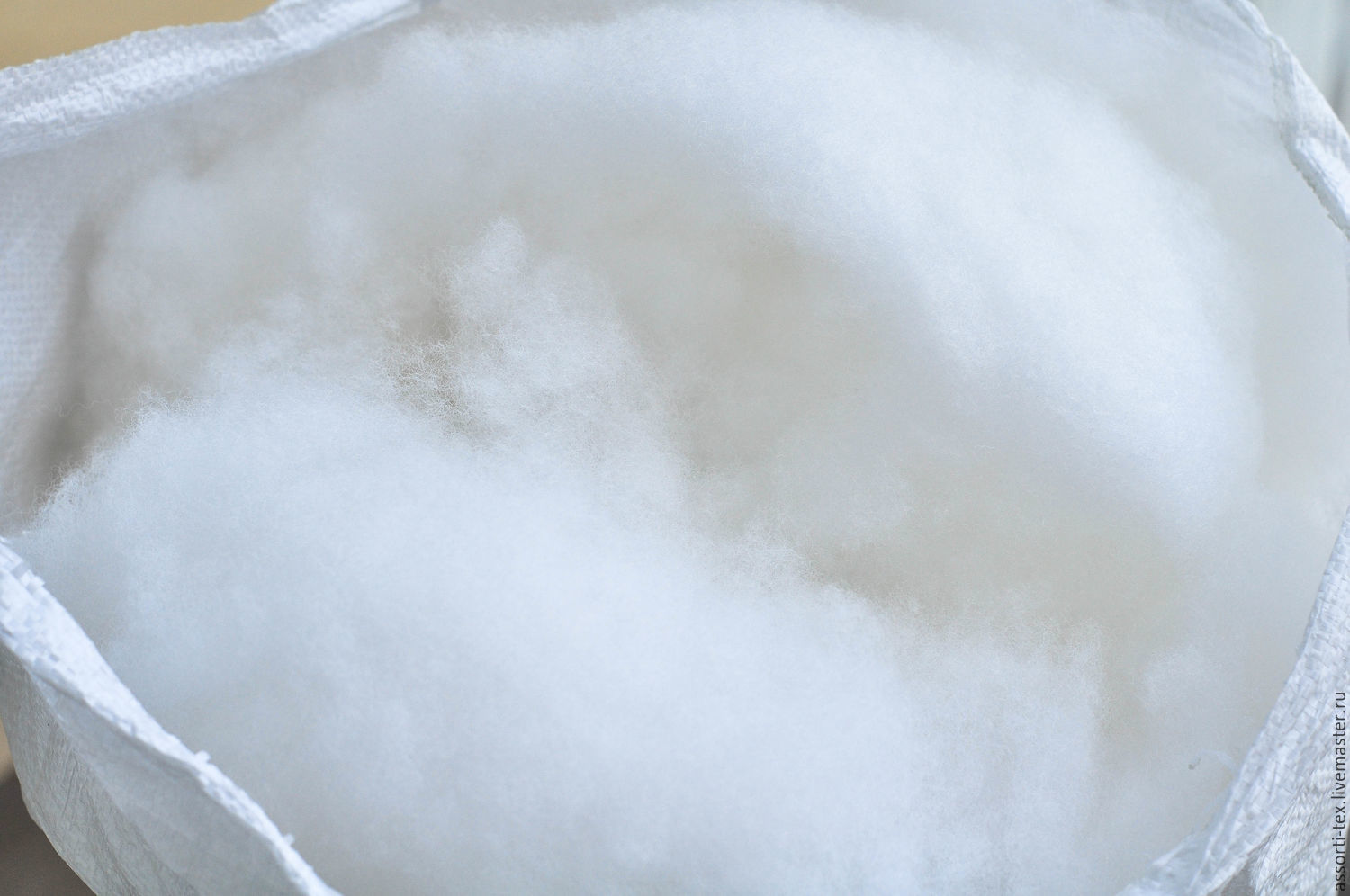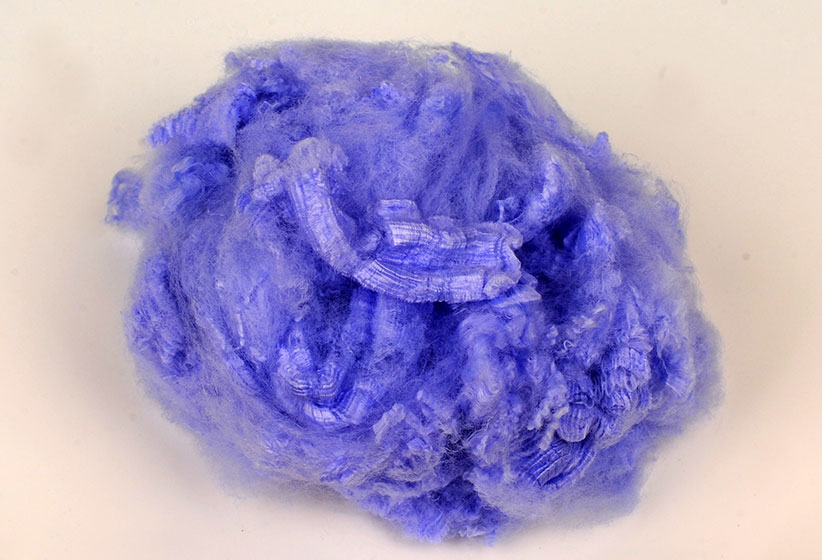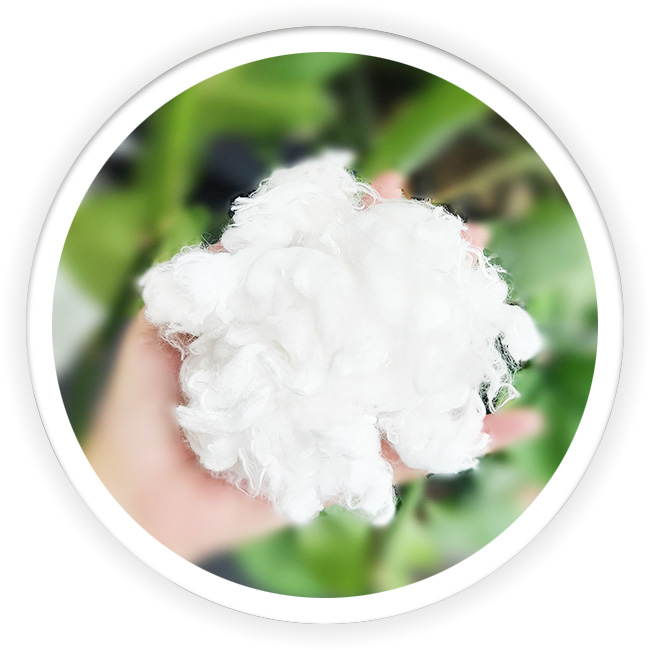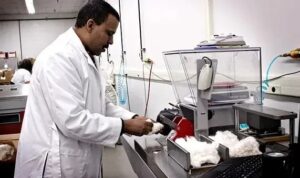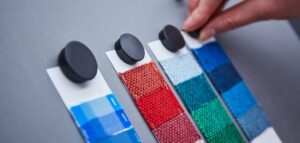Different names of Polyester Staple Fiber
Polyester is usually a kind of polymer synthesized by condensation of dicarboxylic acid and diol. Its basic chains are linked by ester bonds.
Polyester usually refers to the polycondensation of dicarboxylic acid and diol, including fibers composed of linear macromolecules containing more than 85% of diethyl terephthalate in all molecular chains.
There are many kinds of polyester fibers, such as polyethylene terephthalate (PET) fibers, polybutylene terephthalate (PBT) fibers, polypropylene terephthalate (PPT) fibers and so on. The research of polyester staple fibers began in 1930s. It was invented by Whinfield and Dickson in Britain. In 1949, it was industrialized in Britain and 1953 in the United States. It is a product developed relatively late in large varieties of synthetic fibers, but it develops very fast.
Among them, the commodity name of PET fiber in China is polyester. In China, polyethylene terephthalate fibers with more than 85% content are abbreviated as polyester fibers, commonly known as “Liangliang”. There are many foreign commodity names, such as “Dacron” in the United States, “Tetoron” in Japan, “Terylene” in Britain, “Diolene” in Germay. Tergal in France and “Lavsan” and “Elena” in the former Soviet Union.
It can be seen that polyester fiber is only one kind of polyester fiber. Because of its easy availability of raw materials and excellent properties, polyester fibers have become the most productive and widely used fibers in chemical fibers. Therefore, people mistakenly think that polyester fibers are polyester fibers. However, in recent years, with the improvement of fiber production technology, polyester fibers have added two new members, PBT and PTT.
Dacron – Polyester Staple Fiber in the US
Please see the post to learn more: https://vnpolyfiber.com/basic-definition-of-hollow-conjugated-fiber/
Tetoron – Polyester Staple Fiber in Japan
Tetoron is the brand name for a type of polyester fiber predominantly produced in Japan. Developed in the mid-20th century through a collaboration between Toray Industries and Teijin Limited—two of Japan’s foremost chemical and textile companies—Tetoron was introduced during the post-World War II period, a time marked by a global initiative to innovate and commercialize synthetic fibers. The creation of Tetoron was part of Japan’s broader industrial strategy aimed at modernization and competitiveness in the global market. The fiber quickly gained recognition for its versatility and the high quality of end products.
Today, Tetoron is a widely acknowledged brand in Japan and throughout Asia for polyester fibers, and its introduction significantly contributed to positioning Japan as a key player in the global synthetic fiber market. Polyester continues to be one of the most popular synthetic fibers worldwide, utilized in a vast array of applications ranging from everyday apparel to advanced technical fabrics.
Tetoron is a type of polyethylene terephthalate (PET) polyester, akin to other polyester fibers such as Terylene in the UK and Dacron in the US.
Since production commenced in 1958, TORAY TETORON™ has been recognized for its excellent properties, including ideal volume and easy-care characteristics, which have greatly enhanced the comfort of clothing. TORAY TETORON™ is suitable for a diverse range of applications, from bedding fiberfill to industrial and construction materials, encompassing general industrial products, automotive upholstery, and non-woven fabrics.
Key Features of Tetoron
– Durability: Tetoron is characterized by its strength and durability, making it suitable for various applications, including apparel, industrial uses, and home furnishings.
– Wrinkle Resistance: Similar to other polyester fibers, Tetoron exhibits wrinkle resistance, making it an ideal choice for easy-care garments that require minimal ironing.
– Resistance to Shrinking and Stretching: Tetoron fibers maintain their shape effectively, preventing garments from shrinking or stretching after washing.
– Quick Drying: The hydrophobic nature of the fiber means it does not readily absorb water, allowing Tetoron fabrics to dry quickly, which is advantageous for outdoor and sportswear.
– Colorfastness: Tetoron fabrics retain dyes well, ensuring vibrant and long-lasting colors even after multiple washes.
Uses of Tetoron
– Clothing: Tetoron is widely used in various garments, including shirts, suits, and uniforms. It is often blended with natural fibers like cotton to incorporate the softness and breathability of natural materials with the durability and easy-care properties of polyester.
– Home Textiles: Tetoron is also utilized in household items such as bed linens, curtains, and upholstery due to its durability and resistance to wear and tear.
– Industrial Applications: Tetoron is employed in the production of industrial textiles, including conveyor belts, ropes, and nets, as well as automotive upholstery and tire reinforcements because of its strength and resilience to environmental factors.
Lavsan and Elena – Polyester Staple Fiber in the USSR
Lavsan is a trade name for a type of polyester fiber manufactured in the USSR, comparable to Terylene in Great Britain, Dacron in the USA, Tetoron in Japan, Diolen in West Germany, Elana in Poland, Tergal in France, and other polyethylene terephthalate fibers produced through various manufacturing processes.
The term “Lavsan” is derived from the Russian acronym ЛАВСАН (Лаборатория Высокомолекулярных Соединений Академии Наук), which translates to “Laboratory of High-Molecular Compounds of the Academy of Sciences.” This designation refers to the laboratory where the polymer was initially developed in the Soviet Union.
Lavsan shared similarities with other polyester fibers, such as Dacron in the United States and Terylene in the United Kingdom. It was extensively used in the Soviet Union for the production of various textiles, encompassing clothing, household items, and industrial products. The material was notable for its durability, resistance to stretching and shrinking, and excellent color retention. Additionally, polyester fabrics like Lavsan were relatively low-maintenance, being wrinkle-resistant and quick-drying, which made them particularly suitable for the practical needs of the Soviet populace.
The production of Lavsan in the USSR formed part of a broader initiative to develop domestic synthetic fibers, thereby decreasing reliance on natural fibers like cotton and wool that were resource-intensive and susceptible to agricultural fluctuations. Through the promotion of synthetic materials, the Soviet Union aimed to effectively address the clothing and textile requirements of its population in a cost-efficient manner.
Elena is a brand name for another type of polyester fiber that was produced in the Soviet Union. The development of Elena polyester fiber was integral to the USSR’s efforts to expand its synthetic fiber industry during the mid-20th century, focusing on the creation of durable and versatile materials that could meet the demands of both civilian and industrial applications. Like Lavsan, Elena was developed to reduce dependency on more resource-intensive natural fibers such as cotton and wool.
The introduction of Elena polyester fiber represented a significant advancement in the textile industry of the Soviet Union. By producing synthetic fibers like Elena, the USSR reduced its dependence on natural fibers, which were more influenced by agricultural conditions and global market variability. This shift towards synthetic fibers facilitated the mass production of affordable, low-maintenance textiles, effectively meeting the clothing and textile needs of the Soviet population.
Elena polyester fiber, alongside other synthetic fibers developed during this era, played a crucial role in the global transition towards synthetic textiles, paving the way for innovations in fashion, home textiles, and industrial applications. Today, polyester remains one of the most widely used fibers globally, owing to its versatility, durability, and cost-effectiveness.
Characteristics of Elena Polyester Fiber
– Durability: Elena polyester fibers are recognized for their high tensile strength and resistance to stretching, shrinking, and abrasion, making them suitable for a variety of applications, including clothing, home textiles, and industrial products.
– Wrinkle Resistance: As with other polyester fibers, Elena exhibits natural wrinkle resistance. This property allows fabrics made from Elena to maintain a neat appearance with little need for ironing, making them ideal for everyday use.
– Moisture Resistance: Elena fibers have low moisture absorption, enabling them to resist water-based stains and dry quickly, which is practical for diverse environments.
– Color Retention: The fiber retains dye effectively, ensuring vibrant and long-lasting colors, which is advantageous for textiles subject to frequent washing or exposure to sunlight.
– Versatility: Elena polyester could be manufactured in various forms, including staple fibers (short fibers for spinning into yarn) and filament fibers (long, continuous fibers for smooth fabrics), allowing for a wide range of textile applications.
Uses of Elena Polyester Fiber
– Apparel: Elena polyester was extensively used in clothing, particularly for uniforms, suits, dresses, shirts, and sportswear, often blended with natural fibers like cotton or wool to create fabrics that combine comfort with durability and ease of care.
– Home Textiles: It was also used in home textiles, such as bed linens, curtains, tablecloths, and upholstery. The durability and resistance to wrinkling and fading made it ideal for these applications.
– Industrial Applications: Beyond apparel and home textiles, Elena polyester found use in industrial applications, including the production of ropes, conveyor belts, and other technical textiles that required strength and durability.
– Blended Fabrics: Elena was frequently blended with other fibers to improve the characteristics of the final product. For instance, blending Elena with cotton resulted in a fabric that was both soft and durable, suitable for everyday use.
Terylene – Polyester Staple Fiber in UK
Terylene is the British brand name for a type of polyester fiber, which was among the first fully synthetic fibers to be developed and commercialized. It was created in the early 1940s by British chemists John Rex Whinfield and James Tennant Dickson, along with their team at the Calico Printers’ Association in Manchester, England. The fiber is produced by polymerizing ethylene glycol with terephthalic acid, resulting in polyethylene terephthalate (PET), the chemical compound that constitutes Terylene.
The commercial production of Terylene began in the 1950s by Imperial Chemical Industries (ICI), a prominent British chemical company. The introduction of Terylene and other synthetic fibers such as nylon represented a significant transformation in the textile industry. These materials provided new opportunities for fashion and industrial applications due to their unique properties that natural fibers could not offer. The mass production of Terylene in the UK marked a considerable advancement in materials science and industrial chemistry.
Today, Terylene and other polyester fibers continue to be widely utilized across the globe. While the brand name “Terylene” is not as prevalent as it once was, the technology stemming from it still influences the production of synthetic fabrics worldwide. Modern polyester is extensively employed in various sectors, including apparel, packaging, and even plastic bottles, underscoring the lasting impact of this British innovation on contemporary materials science.
Key Features and Uses of Terylene:
– Durability: Terylene fibers are strong and resistant to stretching, shrinking, and abrasion, making them suitable for a diverse range of applications, from clothing to industrial materials.
– Wrinkle Resistance: Terylene exhibits natural resistance to wrinkles, enhancing its appeal for clothing, particularly in the production of easy-care fabrics for suits, dresses, and shirts.
– Quick Drying: The synthetic composition of Terylene allows for rapid drying, offering convenience for everyday wear and maintenance.
– Color Retention: Terylene fibers provide excellent dye retention, ensuring that colors remain vibrant over time, even with repeated washing.
– Versatility: In addition to its use in clothing, Terylene is employed in manufacturing home textiles such as curtains and upholstery, as well as in industrial applications including tire cords, conveyor belts, and insulation materials.
Diolen – Polyester Staple Fiber in Germany
Diolen is a brand of polyester fiber developed and manufactured in Germany. Similar to other polyester fibers such as Dacron (U.S.), Terylene (UK), and Tetoron (Japan), Diolen is produced from polyethylene terephthalate (PET), a widely utilized form of polyester.
The introduction of Diolen and similar polyester fibers represents a significant progression in textile technology, providing a synthetic alternative to natural fibers that can often be less durable and more costly. Polyester fibers like Diolen have been pivotal in delivering cost-effective, durable, and versatile textile solutions across diverse applications. The availability of such fibers has expanded the global textile market and enhanced the accessibility of a broad range of products for consumers worldwide.
Today, Diolen continues to find applications in various sectors, particularly in technical and industrial textiles, underscoring its ongoing relevance and utility within the textile industry.
Characteristics of Diolen Polyester Staple Fiber
– Strength and Durability: Diolen fibers exhibit high tensile strength, contributing to their durability and resistance to wear and tear. This robustness makes Diolen suitable for both apparel and industrial applications.
– Wrinkle Resistance: Diolen fibers possess inherent wrinkle resistance, enabling fabrics made from these fibers to maintain their shape and require minimal ironing.
– Moisture Resistance: With low moisture absorption properties, Diolen fibers resist water-based stains and dry rapidly. This characteristic is advantageous for clothing and technical textiles that must perform effectively in various environments.
– Color Retention: Diolen fibers excel in dye retention, resulting in vibrant and long-lasting colors. This quality is particularly valuable for textiles requiring color fastness, such as apparel and home furnishings.
– Versatility: Diolen can be produced as staple fibers or continuous filaments. Staple fibers are short fibers, comparable in length to natural fibers, which can be spun into yarn for woven or knitted fabrics.
Applications of Diolen Polyester Staple Fiber
– Apparel: Diolen staple fibers are commonly used in clothing, either independently or blended with natural fibers such as cotton or wool. This blending enhances the comfort and aesthetic qualities of the fabric while preserving the durability and easy-care characteristics of polyester.
– Home Textiles: Diolen is utilized in various home textile items, including upholstery, curtains, bed linens, and carpets. The fiber’s durability and stain resistance make it suitable for these applications.
– Non-Woven Fabrics: Diolen is employed in non-woven applications, including geotextiles, automotive interiors, and filters. These applications leverage polyester’s strength, chemical resistance, and versatility to meet specific performance requirements.
– Technical Textiles: Diolen is also utilized in technical textiles, such as industrial fabrics, ropes, and safety belts. The fiber’s high tensile strength and resilience to environmental conditions make it suitable for demanding applications.
Tergal – Polyester Staple Fiber in France
Tergal is a brand name for a type of polyester fiber, specifically polyethylene terephthalate (PET), produced in France. Developed by the renowned French chemical and pharmaceutical company Rhône-Poulenc in the mid-20th century, Tergal has gained popularity due to its durability, ease of care, and versatility. These attributes make it suitable for a wide range of applications, including apparel and home textiles.
Tergal played a significant role in the global textile industry, particularly during the mid-20th century. Its introduction facilitated the mass production of affordable, easy-care textiles, thereby democratizing fashion and broadening the spectrum of available fabrics. Polyester fibers, such as Tergal, provided a practical alternative to natural fibers, especially in markets that prioritized durability and cost-effectiveness.
The emergence of Tergal and similar polyester fibers signified a transition towards synthetic materials in textile production, substantially influencing both the fashion industry and the development of technical textiles. Today, Tergal remains a prominent brand in Europe, continuing to be utilized in various applications, which underscores its enduring impact on the textile sector.
Characteristics of Tergal Polyester Fiber
– Durability: Tergal polyester fibers exhibit high tensile strength and excellent resistance to abrasion, making them both durable and long-lasting. This durability is particularly advantageous in applications that require materials to endure frequent use and wear.
– Wrinkle Resistance: A notable characteristic of Tergal is its inherent resistance to wrinkling. Fabrics made from Tergal retain their shape and appearance effectively, decreasing the necessity for ironing and thus making them ideal for easy-care garments.
– Moisture Resistance: Tergal fibers have low moisture absorption properties, which means they do not easily retain water. This capability allows fabrics derived from Tergal to dry quickly, enhancing their practicality for various applications, including sportswear and outdoor clothing.
– Color Retention: Tergal fibers hold dyes exceptionally well, resulting in vibrant and long-lasting colors that resist fading, even after repeated washing and exposure to sunlight.
– Versatility: Tergal polyester can be produced in both staple fibers and continuous filaments, enabling its use across a diverse array of textile products. Staple fibers, resembling natural fibers, are suitable for spinning into yarn, while filament fibers are long and continuous, making them ideal for the production of smooth, lustrous fabrics.
Uses of Tergal Polyester Fiber
– Apparel: Tergal is extensively utilized in clothing production, including shirts, dresses, suits, and sportswear. The fiber is often blended with natural fibers, such as cotton or wool, to create fabrics that merge the comfort and breathability of natural fibers with the durability and easy-care attributes of polyester.
– Home Textiles Tergal is also employed in various home textiles, including bed linens, curtains, tablecloths, and upholstery fabrics. Its resistance to wrinkling and fading makes it an excellent choice for these applications.
– Technical and Industrial Applications: Beyond apparel and home textiles, Tergal finds applications in technical and industrial sectors, such as the manufacturing of ropes, conveyor belts, and other materials that require strength and resilience against environmental factors.
– Blended Fabrics: Tergal is commonly blended with other fibers to enhance the final product’s characteristics. For instance, a blend of Tergal and cotton combines the softness and breathability of cotton with the strength and wrinkle resistance of polyester, resulting in a fabric that is comfortable, durable, and easy to maintain.
What is PTT fiber?
PTT fibers possess characteristics that combine the attributes of both polyester staple fibers and nylon fibers. They are easy to wash and dry, exhibit excellent elastic recovery, and offer notable wear resistance and tensile recovery. These qualities make PTT fibers particularly suitable for applications such as composite fibers, elastic fabrics, carpets, and other materials.
The term “cashmere-like polyester staple fiber” refers to a soft inorganic substance incorporated into the manufacturing process of the innovative polyester (PTT) fiber. This modification imparts a fluffy and soft texture reminiscent of cashmere, along with a similar luster. Additionally, its low moisture absorption contributes to effective warmth retention, while its good spinnability, ease of dyeing at room temperature, and high dimensional stability enhance its utility and value.
Imitation cashmere is crafted from 100% acrylic, offering a smooth, soft, and elastic feel. It presents brighter and more vibrant colors compared to natural cashmere.
What is PBT fiber?
PBT fibers not only inherit the benefits of polyester but also demonstrate superior dyeing properties. This advancement positions PBT fibers as a promising differentiated option within the synthetic fiber sector. Furthermore, PBT fibers exhibit excellent aging resistance, chemical stability, and heat resistance, making them highly applicable in engineering plastics, household appliances, and various other fields. The introduction of these two innovative polyester fiber types has challenged the predominance of traditional polyester staple fibers, presenting feasible alternatives.
The emergence of PTT and PBT fibers signifies a shift away from the exclusivity of polyester staple fibers. However, distinguishing between these fiber types can be challenging using standard methods. Although infrared spectroscopy and melting point analysis can theoretically aid in identification, the process can be complex. Hence, in accordance with standard GB/T 4146.1-2009, a general report will typically categorize these fibers as “polyester fiber.” Only upon explicit client request, and when the sample can be confirmed as “polyethylene terephthalate (PET),” will testing institutions designate it as “polyester.

